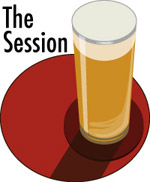MONDAY BEER AND WINE LINKS, MUSING, 02.06.17
Who lives
Who dies
Who tells your story?
– From Hamilton, An American Musical
I don’t care who tells a story as much as I care about the story. There is lot of excellent ones this week, but before getting to those a few thoughts provoked mostly by the rollout of a new beer website called October. It kicked up quite a ruckus in my Twitter feed (one example, and another) and inspired at least one righteous blog post, mostly part because the site has been “co-created with beer giant AB InBev.” And that is something to think about seriously (and maybe even talk about how this is different, or not than A-B’s Here’s to Beer campaign 10 years ago — but not here today).
 This is what happens when you are not distracted by the Super Bowl, Super Bowl commercials or Lady Gaga.
This is what happens when you are not distracted by the Super Bowl, Super Bowl commercials or Lady Gaga.